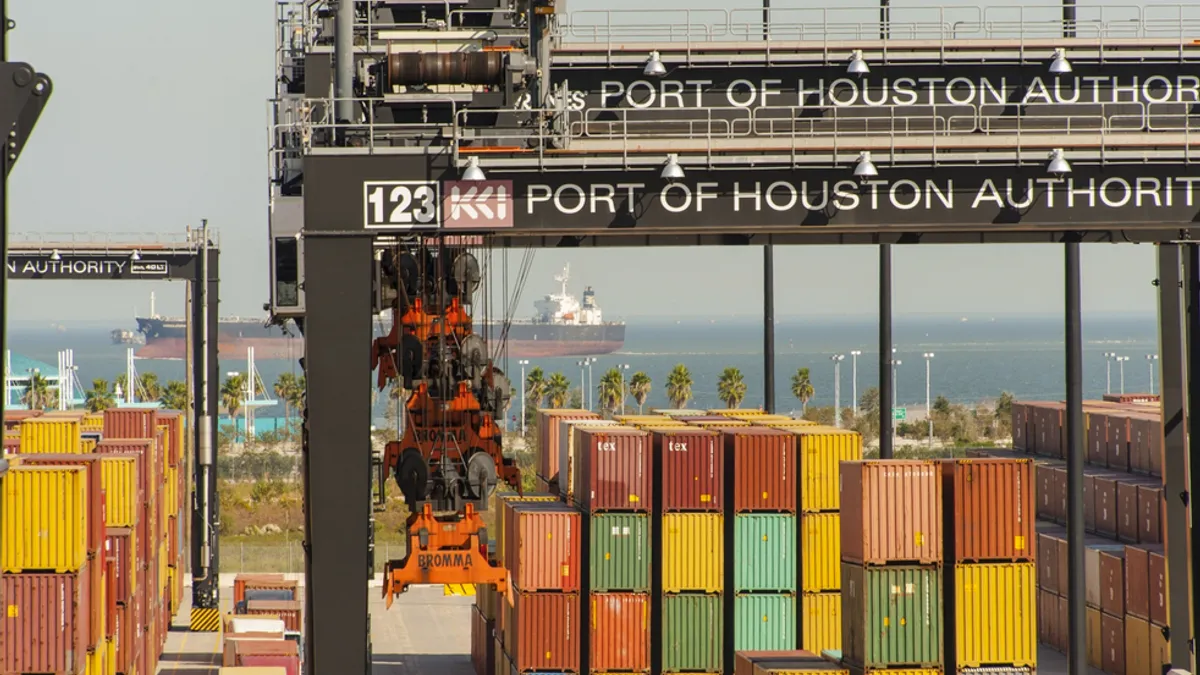Dive Brief:
- When the Port of Houston was closed due to Hurricane Harvey Aug. 25-Sept. 1, a vessel backlog was created, requiring around-the-clock unloading, Flexport reported last week.
- Due to the high numbers of containers, stacking is higher than normal, which extends time spent on retrieval at pickup.
- The port is simultaneously low on valuable chassis. Flexport told Supply Chain Dive in an email that "container drayage capacity in Houston remains tight overall because of continued container backlog. Peak season volumes for large retailers has only added to this issue." This is due to the need to confirm chassis remained in safe working condition. Unfortunately, this further slows traffic as port staff labors to get back on schedule.
Dive Insight:
Chassis make all the difference in a functioning port. And as Houston struggles to recover from storm damage, a host of problems with port chassis only aggravates an already difficult situation.
According to Flexport, "some drayage carriers are not performing street turns. Normally, a street turn improves efficiency by allowing a driver to pick up available export hauls near to their destination. In Houston, this is not occurring and instead drayage carriers are returning to port more frequently."
This isn't the first time a port's operations have been impaired by chassis shortages. A year ago, the Hanjin bankruptcy left the Port of Oakland buried in containers, which were stored atop much needed chassis, throwing the port into chaos. This came soon after uproar over what the chassis industry felt were unjustified surcharges on their equipment, and before a rate increase by providers last winter.
In this instance, however, there's more to the situation than a depleted chassis supply. The supply chain in general has its work cut out for it, moving rebuilding supplies from unaffected areas to those suffering upheaval. With ports, however, work is seasonless, so it's more a question of relocating and moving available chassis from the north to the south. The effort involved in moving a massive chassis, or even a large number of chassis, is extensive, so hopefully various ports will find a quick way to help southern seaports in need.













